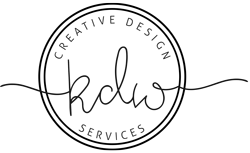Start: Buying your Domain, Setting up your Website and Social Media Accounts
Now it’s time to set up a website! Fortunately, setting up a website and getting started communicating with your message is easier than ever without any programming or design knowledge.
Table of Contents
We strongly recommend starting your blog as a self-hosted website using a host such as Siteground and a blogging platform (such as WordPress.org) as they are very easy to get started and maintain.
The Benefits of Self-Hosted Websites
When you’re ready to start your blog, it’s time to choose a platform for your website or blog. There are two basic options available: self-hosting, and free.
With free hosting plans, you don’t have to pay, but you may end up spending a lot on customization options. You’ll also need to use a platform domain name (e.g. mywebsite.blogspot.com).
However, if you prefer to control your own hosting options (which we recommend), a self-hosted option is best. You’ll be able to post how and when you want and be in complete control of customization and design, among others.
With the self-hosting option, you can create a website yourself and choose a suitable hosting package from a hosting provider. You own all the content and you are free to use and edit the content as you see fit.
A self-hosted website offers:
- Complete control over everything on your website.
- More hosting space.
- The ability to earn money and gain an audience through your website.
- A host of extra bells and whistles for fun or necessity.

How to Host Your Own Website
Here is a step-by-step guide on how to set up your own self-hosted website.
Register Your Domain Name
First, you’ll need to get started by choosing and registering a unique domain name. It allows your business or blog to look more professional while giving you full control over the use of any hosting platform.
GoDaddy is the largest domain registration site and its prices are very reasonable. (For a .co.uk domain, this will cost less than £10 per year) You can search directly on GoDaddy and confirm if the name you want is available, then simply buy it with a single click to secure your spot online.
Purchase a Hosting Plan
Next, you’ll need to get a hosting plan for your website or blog. Hosting refers to the storage space on your website’s servers that hosts your website’s files so that anyone with an internet connection can access them.
Typically you’ll pay your hosting on a monthly or annual basis and hosting plans start at around £3.99 per month.
If you prefer to stick with one company to cover all your website needs – domain and hosting – you can stay with GoDaddy for both.
Another major host with low prices and great service is SiteGround. WordPress hosting at SiteGround starts at £2.99 per month with excellent features.
Compare the features of different hosts and choose the one that fits your goals. Both GoDaddy and SiteGround provide excellent customer support and are two of the most popular web hosts in the world.
For a helpful tutorial on how to set up please see the link below.
Install WordPress
WordPress is very popular and considered to be the preferred platform for self-hosted websites due to its open-source nature and flexibility, not to mention the huge collection of more than 20,000 free plugins that are created and updated by a community of active developers.
You can download and automatically install WordPress plugins on your site in a few clicks. They add just about any functionality to your website, from social media sharing to an email contact form, or a robust shopping cart for an eCommerce website.
Both SiteGround and GoDaddy offer the ability to install WordPress with a simple one-click installation. With GoDaddy, you have a Hosting Control Center where you can go to Your Applications and simply choose what you want to install.
You’ll see a whole list of applications, of which WordPress typically is listed on top. Simply click to install and with a few easy steps you’ll be ready to go.
Choose a Theme and Start Publishing!
After installing WordPress, you can start by choosing a theme according to the layout, style, and colours you want. There are a host of free theme designs available for self-hosted WordPress websites that you can find by searching directly in WordPress or via Google Search.
As you have full control over the theme files, it’s easy to customize and improve them to your liking. You can also hire someone to create a unique design, or choose to purchase a premium theme.
These are some of the many of plugins – literally thousands – that you can add to your WordPress blog. Browse the plugin directory to see which ones could be helpful to you. When you are happy with the installation and plugins, you can start adding new posts and pages. Simply go to your WordPress admin and click “add a new post”. You can then start writing and publish as soon as you are ready – and even share to your social media platforms.
By installing an e-commerce extension such as WooCommerce, you can start selling online with a powerful eCommerce platform that integrates with a host of payment methods and handles your customers, stock count, shipping, and more.

Bulk Bags for E-commerce Deliveries of Materials like Gravel or Sand
The advent of e-commerce has revolutionised how businesses operate, including the distribution and delivery of heavier goods such as sand and gravel. In this sector, the use of bulk bags, often constructed from durable materials like polypropylene fabric, has become increasingly commonplace.
Durability and Capacity: Bulk bags are designed to withstand the demands of transporting heavy, abrasive materials. Manufactured from high-strength, woven polypropylene fabric, these bags offer excellent durability and are capable of carrying substantial weights — often up to 1,000 kilograms. Their toughness ensures the secure containment and safe transport of materials such as gravel and sand.
Convenience and Versatility: Bulk bags are not only robust but also offer convenience and versatility. They feature sturdy handles for easier lifting and movement, often by forklift. The bags’ flexible design allows them to adjust to the shape of their contents, optimising space during storage and transport. Moreover, they can be produced in various sizes, accommodating the varying needs of e-commerce businesses and their customers.
Cost-Effectiveness: The use of bulk bags for delivering heavy items in e-commerce has proved to be cost-effective. These reusable bags lower the cost of packaging and help reduce the environmental impact. Their durability ensures they can be used repeatedly, and their compact, collapsible nature makes them easy to store when not in use.
Environmentally Friendly: As the push for more sustainable business practices intensifies, bulk bags offer an eco-friendly solution. Polypropylene bulk bags are recyclable, further enhancing their green credentials. Additionally, by opting for reusable bulk bags, businesses can reduce waste, contributing positively to environmental sustainability.
Adaptability to E-commerce: Bulk bags are highly adaptable to the e-commerce model. They provide an efficient means of delivering bulky, heavy goods directly to the customer’s doorstep. Their robust construction ensures the goods arrive in optimal condition, enhancing customer satisfaction.
In summary, bulk bags have emerged as a vital tool in the e-commerce delivery of heavy items such as gravel and sand. Their resilience, capacity, cost-effectiveness, and environmental friendliness make them well suited to the demands of modern online commerce.






